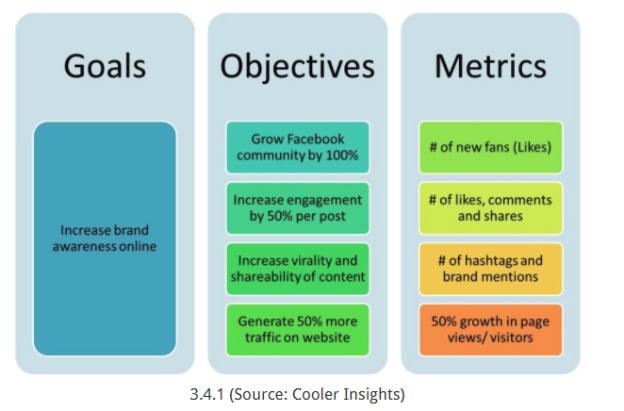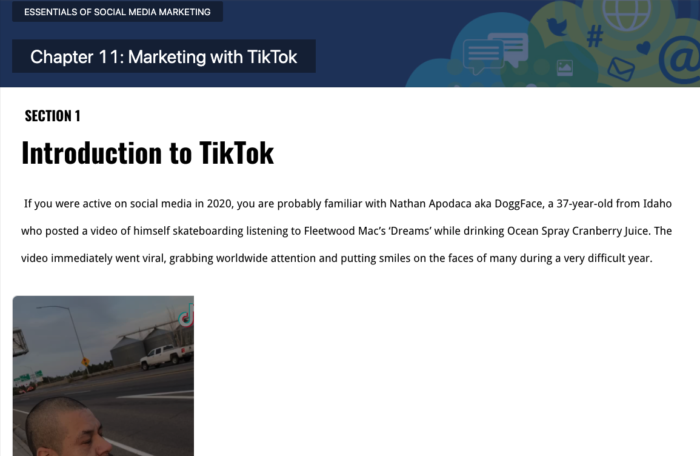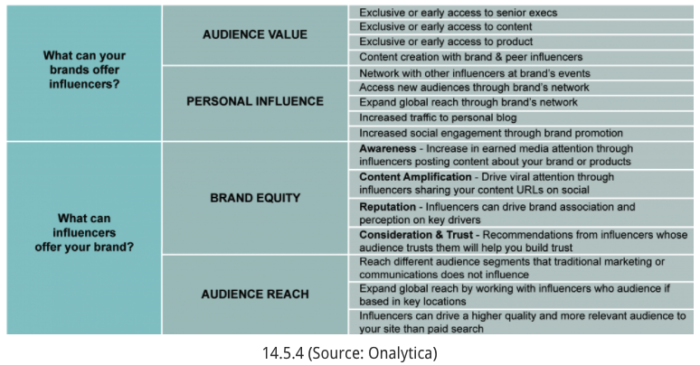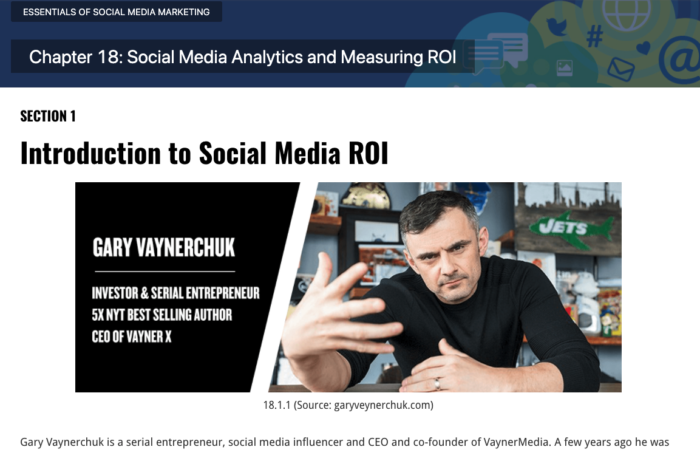
5 Topics Often Missing From Social Media Marketing Courses
Estimated Reading Time: 7 Minutes
Social media marketing is about much more than posting funny photos and promoting the deal of the week. It’s even about more than building the follower count or honing in on the perfect give/get ratio to keep the audience from feeling “sold to.”
Yet many businesses don’t go beyond those basic tactics in their social media channels, and that means there is plenty of need for sharp social media marketing managers at companies large and small.
But who will they hire? Where can you find someone who understands the fundamentals of marketing on Facebook, LinkedIn, Twitter, and other social media channels? It’s tougher than you might think.
There are two primary reasons for this disconnect:
- Today’s students are prone to think they already know everything there is to know about social media. After all, many of them launched their own social media channels while they were in grade school. Knowing how to launch and maintain a personal presence online, though, doesn’t qualify you to hop right into social media marketing. That’s like thinking anyone who can drive is qualified to race in the Indianapolis 500.
- Many social media courses provide a fine overview of social media best practices, but don’t dig down to grapple with the specifics. Students learn about social media marketing theory, but don’t get crucial hands-on experience with the how-to part of marketing.
Here’s something else to consider: Many businesses can’t provide newly hired marketers with effective on-the-job training in social media marketing. Their lack of a sound social media strategy means employees have to lean on the experience they already possess — but it’s not sufficient.
How can social media marketing professors make sure their students get more than a cursory look at social media marketing — that their school’s graduates stand out as exceptionally qualified to jump right in and do the work?
Here are five topics many social media marketing courses fail to address sufficiently. We’ll also provide a suggestion about how professors can give students an enhanced experience in their social media marketing course — even when it seems there’s not enough time allotted for the class to drill down further.
Social Media Marketing Topic #1: Strategy, Goals, and Objectives
To quickly jumpstart a vibrant discussion — whether in the classroom or the office — ask participants to explain the difference between strategy, goals, and objectives. To pump up the heat, throw out the idea that goals ARE objectives … and that both are parts of a sound strategy. There are few topics with more room for confusion than this one, and that lack of clarity can make it difficult for a company to develop a sound and clear social media strategy.
Michelle Charello, author of Stukent’s digital courseware, “The Essentials of Social Media Marketing,” brings years of hands-on experience to the table. Charello is the head of content and thought leadership for integrated marketing at Schneider Electric, a Fortune 500 Company. What is Charello’s take on the importance of strategy?
Being active on social media without having a proper strategy in place can be detrimental for brands. Without a formal plan in place, social media efforts can be haphazard, to say the least. It is essential for every company, large or small, to have a detailed social media marketing strategy in place before launching any social media activities.
Here are some of the social media marketing strategy topics, Charello recommends for a well-grounded course. Instructors can get free access to the entire digital resource by visiting the course page on Stukent’s website.
- How to identify a target market and create personas
- How to conduct a social media audit
- How to establish social media marketing goals, objectives, and metrics
- How to create a content and distribution strategy
- How to create a social media advertising strategy
- Best practices for social media advertising
- How to determine resources, rules, and responsibilities
Chapter three of “The Essentials of Social Media Marketing” drills down to the basics and stresses the idea that every social media marketing goal “should be tied to the overarching business and marketing goals for the company.”

Social Media Marketing Topic #2: The Importance of Monitoring Emerging Social Media Platforms
One could rightly expect an introductory social media marketing course to cover popular platforms like Instagram, Pinterest, and YouTube. What happens, though, when a new social media channel emerges and rapidly gains market share?
Standard printed textbooks don’t stand a chance of keeping up. By the time the material gets compiled and the books published, the situation may be entirely different. Yesterday’s digital marketing news is often irrelevant next year — and sometimes even next month. Book publishers may mention emerging platforms, but seldom cover them well. In addition, anything they print may be inaccurate by the time the books are in the hands of students and professors..
Professors can, and should, show students how to stay up with the news — and Stukent’s monthly coverage of the latest digital marketing news on the Stukent Blog is an excellent resource for that. But how do you add a rising star like TikTok into your lesson plan? With textbooks, that’s difficult. With Stukent’s digital marketing courseware, though, the content gets updated regularly. And that’s why Chapter 11 of “The Essentials of Social Media Marketing” covers social marketing with TikTok.
The digital marketing courseware Stukent pioneered gives students and professors a way to stay current in a world of rapid change. If you think we’re beating our own drum here, you’re right. Remember, though, “If you done it, it ain’t bragging.”

Social Media Marketing Topic #3: Influencer Marketing
Tweets by Elon Musk can influence the global market for digital currencies. Athletic shoes worn and recommended by influencers can send sales soaring. The Adidas Neo project, for example, leveraged the popularity of Selena Gomez to launch a fan-voted advertising campaign that paid off handsomely for the brand.
Chapter 14 of “The Essentials of Social Media Marketing” guides social media marketing students through these insights:
- How to identify and define the types of influencers
- Understanding the power and benefits of influencer marketing
- How to determine the potential effectiveness of an influencer in a social marketing campaign
- How to create a social media influencer marketing strategy
Selena Gomez, by the way, is a singer, not a star athlete. Why would Adidas choose her for the campaign? That’s a discussion that could generate student interaction and switch on the strategic marketing light in a social media marketing classroom.

Social Media Marketing Topic #4: Crisis Response and Social Media Policies
A Taco Bell employee posted a photo of himself licking a stack of taco shells. Dominoes workers posted a disgusting video of food tampering on YouTube. A musician fought back against United Airlines for trashing his guitar but refusing to accept responsibility. These posts and many others like them tarnished the brand and sometimes got the people who posted them fired.
Social media posts can gain traction and grab the public’s attention quickly. That’s why every digital marketing team needs policies in place to both set the online behavioral expectations for employees and to outline how the company will respond to any incidents that occur. And consider this: Even companies that don’t participate in social media channels need a social media policy. The musician, for instance, wasn’t working for United Airlines, but sure caused some branding problems for the business.
Companies face a dilemma: Should they empower employees to talk about the brand on social media, or should they discourage personal sharing about their work? It’s a classic case of risk versus reward. Chapter 16 of “The Essentials of Social Media Marketing” covers the topic extensively. The author also provides a list of tactics to guide the response effort.
Social Media Marketing Topic #5: Social Media Analytics
While it is difficult to determine the ROI for social media marketing, there are ways to measure the total investment the company is making in social media and assess the return on that investment. Reports generated by Google Analytics and other tools can provide valuable data, and Charello shows students how to leverage that power.
The first step in social media analytics, though, is to determine what a win looks like. Are you hoping to create orders directly from the social media channel, or is the primary goal to drive traffic to another page? Maybe the company uses social media to build brand recognition or to serve as a customer service platform.
Once the objectives are clear, the next step is to determine the metrics related to those objectives and then to devise ways of tracking them. Chapter 18 of “The Essentials of Social Media Marketing” covers the topic in depth.

An Easy Way to Ensure Your Social Media Marketing Course Covers All the Right Bases
You may have noticed that we’re sold on the ideas covered in Stukent’s courseware, “The Essentials of Social Media Marketing,” and you are correct in that observation. Not only does the content cover all five of the topics listed above, but it includes lesson plans for each of the 18 chapters, lecture slides, a sample syllabus, a weekly schedule of assignments, video sessions by experts, quizzes, and more.
Here’s how to teach social media marketing at an elevated level, but without putting unreasonable demands on your time: Pair “The Essentials of Social Media Marketing” with the Mimic Social simulation courseware. You can give students a realistic taste of what social media marketing entails and the situations social media marketers encounter in their daily work. Your social media marketing course can be the ignition point that helps students not just learn about digital marketing — but discover how to put the fundamentals of digital marketing to work. Nothing impresses employers more.